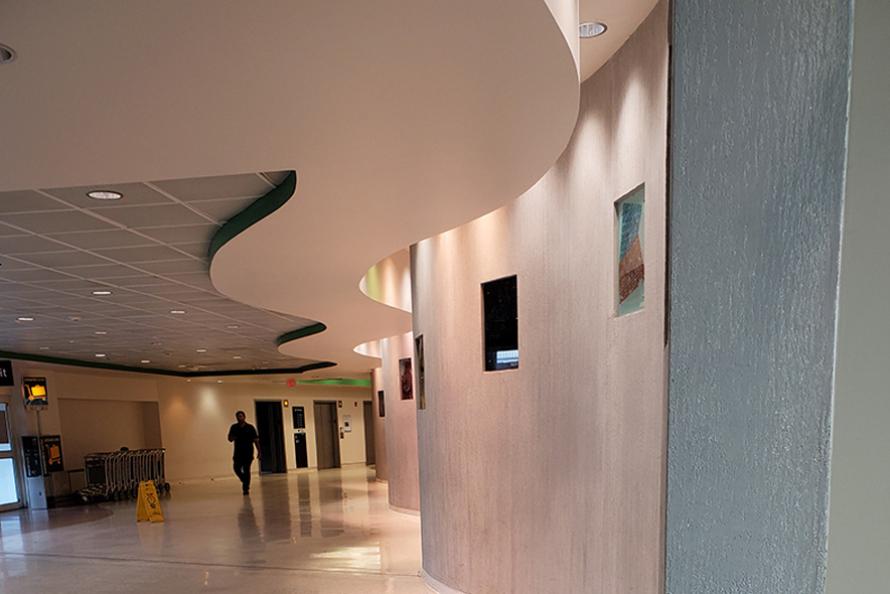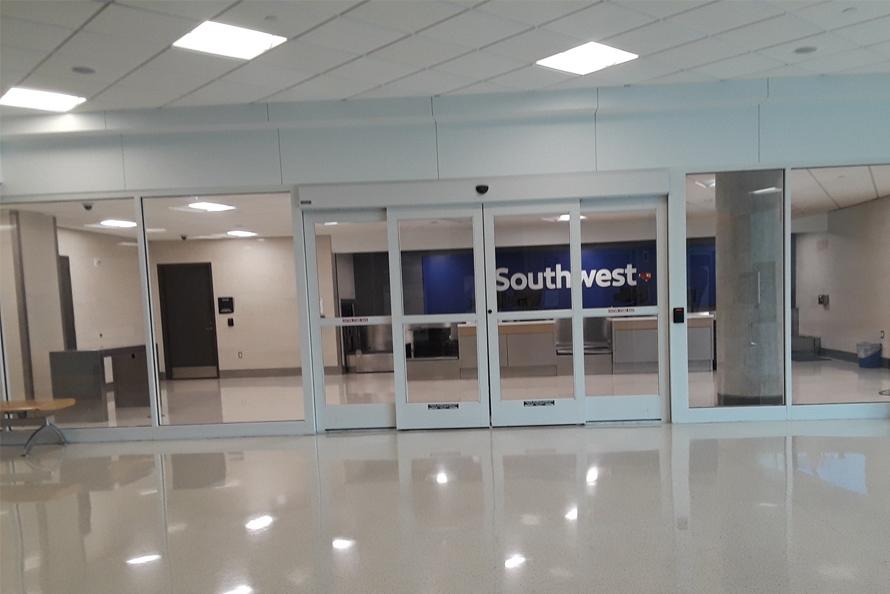The future of Houston Airports is brighter and clearer than ever.
Houston’s two international airports are undergoing major infrastructure and equipment upgrades and much-needed renovations through a design and construction management agreement with the Texas A&M Engineering Experiment Station, TEES, a member of The Texas A&M University System, TAMUS.
Project Manager Eren Selcen said the Capital Improvement and Energy Efficiency Upgrade Project at William P. Hobby, HOU, and George Bush Intercontinental, IAH, Airports will reduce the airports’ utility costs and improve air quality for Houston residents. The full project scope includes but is not limited to:
-
HOU concourse controls and Variable Frequency Drive, VFD, upgrades
-
HOU chillers and chilled water system upgrades
-
IAH and HOU Baggage Handling System upgrades
-
IAH and HOU garage and terminal lighting upgrades
-
IAH Terminal continuous commissioning
-
IAH Air Handling Unit constant volume to variable air volume conversions
-
HOU Red Garage photovoltaic system addition
The implemented projects will reduce the annual energy consumption by more than 24 million kilowatt-hours, while reducing the utility costs by more than $1.3 million annually. This will also help HAS reach its “net-zero” energy goal for IAH. The projects are aligned with Houston Airports’ strategic priority of acting responsibly to achieve social, environmental and economic sustainability.
“I applaud this partnership and look forward to realizing its benefits,” Mayor Turner said.
Houston Mayor Sylvester Turner said that collaboration among Houston cities, universities, and centers of commerce, leveraging technology for sound business practices and a better world, is a great boost for the city.
The main objective for these projects is to replace outdated equipment, controls, baggage handling system and lighting at the airports. The projects include installing four new chillers as part of a new utility plant, improving buildings operations and installation of a solar array on new shading canopies.
As part of this agreement, the Texas A&M Energy Systems Laboratory will manage the project design and construction. The systems laboratory will implement this project with the majority of funding from the LoanSTAR Program, administered by the State Energy Conservation Office, SECO, of the Texas Comptroller’s Office. The cost of the project and upgrades will be paid back mostly by the stream of utility cost savings made possible as soon as the individual projects are implemented. Another major benefit will be the improved air quality in Houston and providing emissions reduction credits as part of Houston’s commitment in reducing nitrogen oxides as required by the Texas Emissions Reduction Plan (TERP).
“Houston Airports is looking to ensure sustainability into the future,” Houston Airports Chief Infrastructure Officer Bob Barker said. “Through ongoing programs and projects like the Capital Improvement and Energy Efficiency Upgrade Project, we are preparing for increased passenger growth and continuing to make things better for our passengers and our people.”
Selcen was quick to spread the credit for the initiative to Barker. He also applauded the support of Barker’s leadership team, including Scott Hill, Devon Tiner, and Justina Mann, along with numerous other staff and contractors.
The project began in April 2019 and is expected to conclude in the Fall of 2021.


